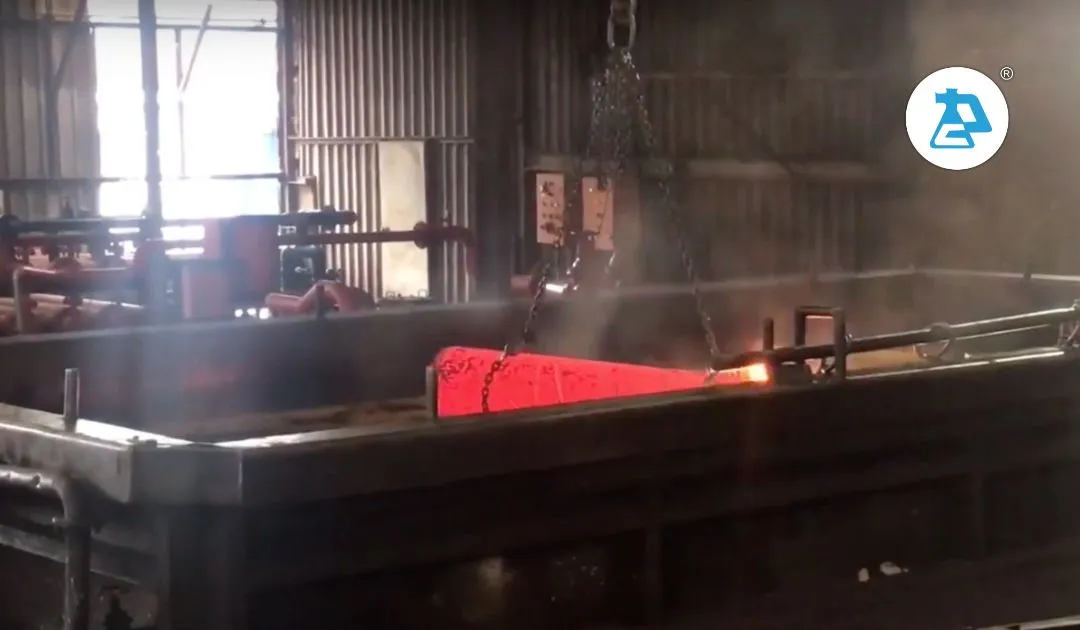Introduction
In the field of metallurgy, heat treatment is a key procedure that gives metals and alloys crucial physical and mechanical qualities by acting as a transformative catalyst. The essential step of quenching, which involves rapidly cooling a heated metal workpiece, is at the core of this transformational process. Quenching oils play a key function in this crucial stage of heat treatment since they are known for their ability to precisely control the cooling rate. In this thorough investigation, we delve into the complex world of quenching oils, revealing both their unique benefits and corresponding drawbacks in the complex world of heat treatment procedures.
Advantages of Quenching Oils:
- Controlled Cooling Rate: Quenching oils provide the precise, orchestral control over the cooling rate of a metal workpiece, akin to a conductor guiding an ensemble to achieve symphonic harmony. This controlled cooling is paramount in crafting the desired microstructure and mechanical properties. Different variations of quenching oils can be judiciously selected, allowing for the tailoring of cooling rates to the nuanced demands of the material under treatment.
- Reduced Distortion: With an artful touch, quenching oils adeptly minimize distortion and the ominous specter of workpiece cracking during the cooling process. The gradual and nuanced cooling afforded by these oils ensures a more equitable distribution of temperature, thereby mitigating the likelihood of thermal stresses and the warping of the metal.
- Improved Hardness: Quenching oils serve as the alchemists of metallurgy, effecting a profound transformation of the metal’s hardness. Through the control of the cooling rate, these oils encourage the formation of a fine-grained microstructure, culminating in heightened hardness and augmented wear resistance.
- Minimized Quench Cracking: The cataclysm of quench cracking, a malevolent adversary to the metallurgist, is kept at bay by quenching oils. By bestowing a gentler and more uniform cooling process, these oils diminish the peril of quench cracking and the subsequent material fracturing.
- Versatility: The versatility of quenching oils is akin to an artist’s palette, offering an array of colors to choose from. These oils can be deftly tailored to suit different materials and a wide spectrum of heat treatment processes. The arsenal includes mineral oils, polymer quenchants, and water-based quenchants, each to be summoned based on the unique requirements of the workpiece.
Disadvantages of Quenching Oils:
- Environmental Concerns: The legacy of many traditional quenching oils is intertwined with petroleum, which carries with it a dark cloud of environmental concerns. The disposal of used quenching oils presents a significant predicament, as their potential for soil and groundwater contamination looms large. Stringent environmental regulations necessitate the proper disposal and management of these oils, adding to the complexities of their usage.
- Fire Hazard: Like Prometheus’s stolen fire, some quenching oils possess the treacherous trait of flammability, particularly when subjected to high temperatures. Safeguarding measures and a diligent approach to safety are mandatory to avert potential conflagrations and ensure workplace security.
- Maintenance and Cost: Quenching oils, much like intricate machinery, require meticulous upkeep to maintain their efficacy. Regular vigilance is demanded to ensure optimal oil levels, filtration, and temperature control. Moreover, high-quality quenching oils can be substantial investments, further augmenting the overall cost of the heat treatment process.
- Limited Heat Transfer: Quenching oils, in their intrinsic nature, possess lower thermal conductivity when compared to water or alternative quenching media. This innate limitation translates into comparatively slower cooling rates, a characteristic that may not be suitable for all applications. In situations necessitating rapid cooling, alternative quenchants may be favored to expedite the process.
- Health and Safety: The shadow of health and safety looms large over prolonged exposure to quenching oils, especially those infused with additives. Prudent adherence to safety protocols, including the utilization of personal protective equipment, is imperative to mitigate the risks posed to the well-being of workers.
Conclusion
Quenching oils play a key role in the orchestration of metallurgical changes, enabling regulated cooling and giving metals and alloys improved mechanical characteristics. However, their diverse job has a well-balanced mix of benefits and drawbacks. Quenching oils provide a number of risks to health and safety, the environment, and fire safety while allowing for precise control over cooling rates and reducing the possibility of distortion and cracking. The choice of a quenching medium should be thoughtful and deliberate, taking into account the unique requirements of the heat treatment process as well as the workplace’s environmental and safety concerns.






